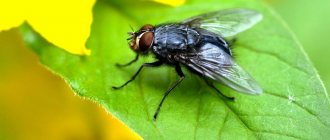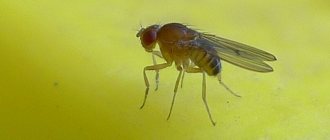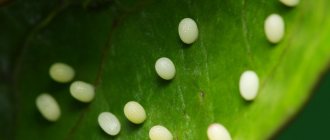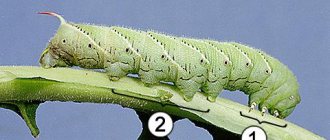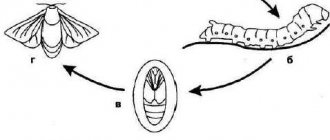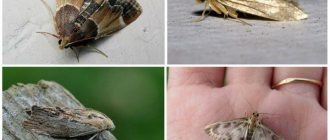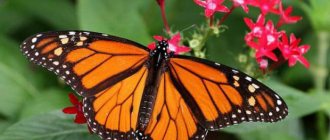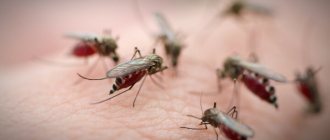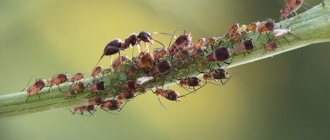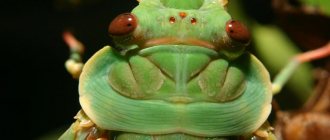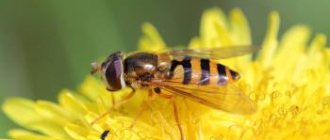The tsetse fly is the most dangerous fly species, killing thousands of people every year. This tiny insect is a carrier of a deadly disease called sleeping sickness.
Tsetse flies are distributed exclusively in African countries, where the low social level does not allow the use of highly effective methods of exterminating dangerous insects.
Due to the characteristics of their habitat, these carriers of a deadly infection prevent the development of fertile lands located near water bodies . Obligate parasites put millions of people and livestock at risk every day.
Habitats
The tsetse fly is widespread in Africa. The habitat of obligate parasites includes countries located south of the Sahara Desert.
The tsetse fly lives in 37 countries, most of which are the poorest in the world. Due to the extremely low social level of the states, the authorities are unable to use chemicals against parasites and provide the population with medications that could save the population from death.
Tsetse flies, which carry a dangerous disease, are common in areas of the African continent that are free from people and have the status of wildlife reserves.
It should be noted that it is the peculiarities of the habitat of insects dangerous to humans that prevent people from developing fertile land.
Video
WORLD OF INSECTS - FLIES: Tsetse FLY
Types of tsetse flies
It’s hard to imagine how much effort and probably suffering it took for entomologists to study and group dangerous insects into separate groups:
- representatives of the morsitans group live mainly in savannah forests and savannas, easily adapting to a relatively dry climate. It was these flies that contributed to the expansion of the area of wooded savannas, which is why Sierra Leonean pastoralists stopped raising horses;
- species of the fusca group are typical inhabitants of tropical rainforests; their bites are mainly inflicted on wild mammals, and less often on people and livestock;
- Tsetse flies from the palpalis group are the most moisture-loving, but they are attracted not by jungle swamps, but by open areas along river banks, where fishermen and swimmers most often become victims of insects.
It is in such natural conditions that the most dangerous insects on the planet live and breed safely, because they do not experience a shortage of food sources.
What does it look like
The structure of the tsetse fly, classified as a member of the order Diptera, includes three main sections: thorax, abdomen, and head. The size of the insect varies from nine to fourteen millimeters.
The tsetse fly looks like this: reddish-gray color, the presence of four longitudinal stripes of a dark shade on the back.
Features of the appearance of an obligate parasite are called:
- A forward-facing proboscis that is strong enough to pierce the hides of cattle.
- The transparent wings have a pattern that can be compared to the outline of a hatchet.
- The antennae have forked hairs.
- At rest, the wings of an insect are folded on top of each other on its back.
This insect, which provokes the development of sleeping sickness, is capable of drinking a volume of blood equal to its own weight.
An interesting feature: the reproductive organs of females are large in size, which allows them to accommodate a larva that is in the third stage of development.
Why is it dangerous?
Tsetse flies are not poisonous, but they are the most dangerous species for humans and animals.
This is due to the fact that insects are carriers of the dangerous disease trypanosomiasis, the causative agents of which are microscopic parasites of the same name that constantly live in the bodies of large antelopes and buffalos.
The disease is especially dangerous for humans, leads to damage to the immune and nervous systems and, in the absence of timely measures, leads to death.
What diseases does it carry?
The main danger of the tsetse fly is as follows: the insect is a carrier of the disease trypanosomiasis, which is dangerous for people and animals.
Depending on the specific characteristics, the disease is divided into two main subcategories:
- Rhodesian or eastern form of sleeping sickness. A characteristic feature of this disease is its rapid course, associated with damage to the heart muscle, brain, and an increase in the clinical picture.
- Gambian form. It has a long course. From the moment of infection to death, if timely measures are not taken, it takes from one to five to six years. The disease is divided into two periods. The first lasts up to five years. During this time, the following clinical picture is typical: skin rashes, periodic fevers, acute headaches, swollen lymph nodes. The second period is characterized by a rapid course, accompanied by destruction of the nervous system, the main symptoms: tremors of the limbs, disorientation, drowsiness. In severe cases, complete paralysis may occur. The use of drugs at this stage is rarely characterized by the appearance of positive results.
Regardless of the type of sleeping sickness, the classic symptoms of this disease are: impaired coordination, motor ability, numbness, trembling of the limbs, sleep disturbance.
The consequence is confusion, disorientation in space, increased temperature, feverish state, and joint pain.
The primary clinical sign of invasion is the formation of dense chancre, after opening of which a noticeable scar remains.
In the early stages of sleeping sickness, treatment is effective through the use of a number of medications: Suramin, Pentamidine. These medications help suppress parasites.
However, their use in the later stages of the disease can lead to counterproductive results and worsen the patient’s condition. The difficulty of treatment lies in the rapid mutation of microscopic parasites and their resistance to the effects of medications.
Consequences of bites
The consequences of a tsetse fly bite are equally dangerous for livestock, wild animals, and people. Insects, as mentioned above, are carriers of the Nagan virus, trypanosomes.
A tsetse fly bite can cause the following negative consequences:
- Males and females of tsetse flies consider wild and domestic animals as food sources. An attack by a parasite can cause severe consequences for the animal, including death. Every year, up to three million animals die from bites, causing massive damage to agriculture. There is a vaccine that prevents animals from being infected with a dangerous virus, but due to the high level of poverty, not every farm animal owner can afford to treat their entire livestock. Infection of livestock with the Nagana virus leads to an increase in the number of spontaneous abortions, a decrease in the volume of dairy products, and weakening of the affected animal.
- The consequences of a fly bite are no less dangerous for humans. Microscopic parasites, which may be present in the insect's saliva, penetrate the human systemic bloodstream. Sleeping sickness develops, which can cause death if not treated in a timely manner.
Interesting fact: tsetse do not attack zebras, which is due to the specific color of these animals. Flies simply do not perceive equids, not considering them as prey.
4.What to do after an insect bite?
If you are bitten by a bee on your hand, you should immediately remove all rings and other jewelry, and then try to pull out the sting. It is important to carefully remove the sac filled with poison using any hard object. At the same time, try not to pull the bag or press on it, as in this case you will only speed up the injection of the poisonous liquid.
People who are not prone to developing allergic reactions to wasp and bee stings should take a tablet of any antihistamine: Tavegil, Fenkarol, Parlazin, Suprastin, etc. It is also worth applying a lotion soaked in any antiseptic to the stung area, and then lubricate it with a soothing ointment. Act according to the circumstances. For example, if your hand is very swollen and the swelling does not disappear for a long period of time, apply a cold compress or ice to the affected area of skin. In such a situation, it would not be superfluous to take another antihistamine tablet.
It is important to monitor the condition of a person who has been bitten, as it can worsen at any time due to changes in blood pressure, an increase in body temperature, and the appearance of rashes on other areas of the skin. If necessary, you should call an ambulance.
Structure
The body structure of the tsetse fly includes three sections: head, abdomen and thorax.
Additional characteristics:
- The chest consists of three elements fused together.
- Three pairs of paws.
- The oral apparatus of insects includes microscopic elements that can be called teeth. The fly uses them to chew through blood vessels.
- The parasite's saliva contains a special enzyme that prevents the victim's blood from clotting.
Depending on the species, tsetse flies can live near bodies of water and in areas with arid climatic conditions.
Fighting the parasite
For many years, the fight against tsetse flies consisted of cutting down tropical bushes and shooting wild animals.
The only known drug against the disease trypanosomiasis is the drug elofritin , but this is a rare and expensive drug.
People from African tribes know how to catch flies with their hands and try to crush them with their fingers in order to be sure to kill them and protect themselves from further bites of tsetse flies, but in this way people can destroy only an insignificant part of the tsetse.
The fight against the species is carried out using radioactive irradiation.
Life cycle and reproduction
The life cycle of the tsetse fly includes three stages: larva, pupa and adult.
These insects are viviparous; throughout the life of the female, the female reproduces no more than eight to twelve complete individuals.
During one breeding cycle, the female bears one larva, which is viable. Immediately after birth, the individual buries itself in the ground and pupates.
The lifespan and development of an obligate parasite ranges from five to six months. During this period, the female mates only once.
In this case, the male’s reserve of productive material is sufficient to fertilize several larvae, which are gestated by the female sequentially every twenty to thirty days.
1.General information
Insect bites
- a phenomenon familiar to everyone. This is especially true in the summer, when most representatives of the order of arthropods can be found literally everywhere where there is land and sunlight.
Many insects (wasps, bees and others) when bitten, secrete a toxic liquid, which, when it enters the body of a hypersensitive person, causes allergic reactions. Despite the fact that they are rarely serious, causing only minor swelling and redness, the basic symptoms of allergies should be known to every person. This information will help you identify an allergy to insect bites in order to cope with it yourself or with medical help.
A must read! Help with treatment and hospitalization!
